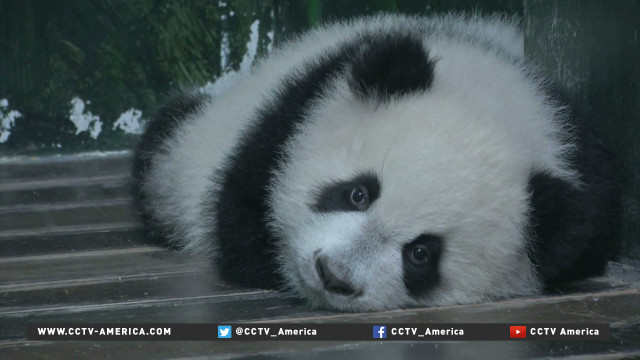Giant pandas, considered as China’s “national treasure,” are extremely endangered. As the only country home to giant pandas, China began to protect them in the 1960s. How many of them are left? A new national survey shed some light on this issue. CCTV’s Wu Guoxiu reported from Beijing.

There are more and more giant pandas are being detected in the wild. Wild giant pandas can only be found in Shaanxi, Gansu and Sichuan provinces, with over 70 percent in Sichuan. The species’ steady increase in numbers has been attributed to legislation, state-funded protection and research programs.
China has conducted its fourth national survey of giant pandas. “The survey showed that by the end of 2013, the population of wild giant pandas across the country reached 1864, an increase of 16.8 percent from the last survey ten years ago. The population of captive giant pandas is 375,” Chen Fengxue, deputy director of State Forestry Administration, said.
According to the survey, though their numbers are on the rise, one-third of wild giant pandas, or about 600, are still not in nature reserves. They are broken up into small groups, by power stations, roads and high-voltage power lines, all of which seriously threaten their lives and reproduction.
Authorities have vowed tough measures to protect the species. “From this year, we’ll absolutely not allow tourism, mining, or building parks and villas in or around giant panda habitats. We’ll expand nature reserves as much as possible and channel the 33 isolated groups in three or five years,” Chen said.
International cooperation is also an important part of panda research. China plans to continue with this.
“Since the 1990s, China has not given any pandas away as gifts. We selected foreign zoos to cooperate in research with us. Currently, 42 panda adults and cubs are living abroad in 12 countries,” Deputy Director Jia Jiansheng of Wildlife Conservation Depertment in State Forestry Administration said.
China’s authorities believe that the survival of the giant panda can not be completely left up to nature, but to a greater extent on their care and management by humans.
 CGTN America
CGTN America
